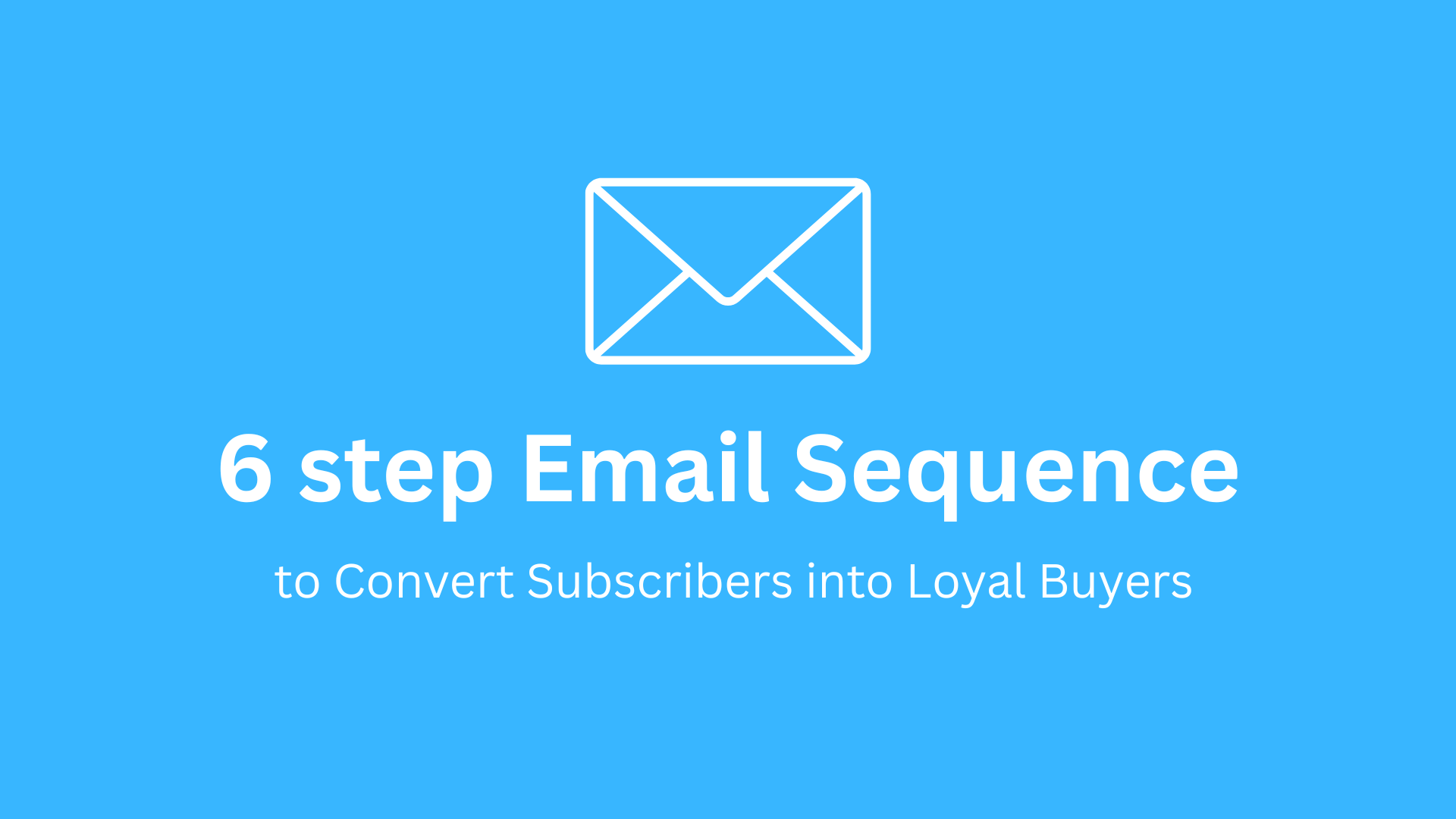
The Ultimate 6-Step Email Sequence to Convert Subscribers into Loyal Buyers
Turning subscribers into buyers isn’t luck—it’s strategy. A well-crafted email sequence guides your audience from curiosity to confidence, then finally to purchase. In this guide, we’ll break down a proven 6-step email sequence used by top marketers like Maruf to nurture leads, build trust, and drive sales. Whether you’re launching a new product or re-engaging your list, this sequence works for any niche. Let’s unpack each step, including when to send and exact templates to steal. Ready to transform your email game? Let’s dive in!
Step 1: The Welcome Email – First Impressions Matter
Purpose: Introduce your brand, deliver on your opt-in promise, and set expectations.
Why It Works: 74% of subscribers expect a welcome email immediately after signing up. It’s your chance to make a strong first impression.
How to Structure:
Subject Line: “Welcome to [Brand]! Here’s Your Free [Resource]”
Body:
Greet them warmly.
Deliver the lead magnet or opt-in offer.
Briefly explain what they’ll receive from future emails.
Include a soft CTA (e.g., follow on social media).
Example Template:
“Hi [Name],
Welcome to [Brand]! 🎉
As promised, here’s your free [e-book/checklist/template].
In the next few days, I’ll share:
• Tips to [solve their problem].
• Stories from customers like you.
• A special discount just for subscribers.
P.S. Follow us on [social platform] for daily tips!”
Pro Tip: Add a short video intro to humanize your brand.
Step 2: The Story Email – Build Connection Through Narrative
When to Send: 1–2 days after the welcome email.
Purpose: Share your brand’s origin story to create an emotional bond.
Why It Works: Stories activate empathy and make your brand relatable.
How to Structure:
Subject Line: “How [Brand] Started: A Story of [Struggle/Success]”
Body:
Share a personal or brand journey (e.g., overcoming a challenge).
Highlight your mission.
Link to a blog or “About Us” page for deeper engagement.
Example Template:
“In 2018, I was [problem: e.g., drowning in debt].
That’s when I discovered [solution], and everything changed.
Today, [Brand] helps [audience] [achieve result].
Want to know more? [Read our full story here].”
Pro Tip: Use visuals like old photos or behind-the-scenes clips to add authenticity.
Step 3: The Problem Email – Agitate the Pain Point
When to Send: 2–3 days after the story email.
Purpose: Make the problem your product solves feel urgent and relatable.
Why It Works: People buy solutions, not products. Highlighting their pain motivates action.
How to Structure:
Subject Line: “Tired of [Problem]? Here’s the Fix”
Body:
Describe the problem in vivid detail.
Explain the consequences of ignoring it.
Introduce your product as the solution.
Example Template:
“Does [problem: e.g., slow website traffic] leave you feeling frustrated?
Without [solution], you’ll keep [negative outcome: e.g., losing sales].
But imagine [positive outcome: e.g., doubling your traffic in 30 days].
[Product] makes it possible. [Learn more here].”
Pro Tip: Use rhetorical questions to engage readers (e.g., “Sound familiar?”).
Step 4: The Social Proof Email – Validate with Proof
When to Send: 2–3 days after the problem email.
Purpose: Use testimonials, case studies, or data to prove your product works.
Why It Works: 92% of consumers trust peer recommendations over ads.
How to Structure:
Subject Line: “Why [X] Customers Swear By [Product]”
Body:
Feature 2–3 testimonials or success metrics.
Include photos or video testimonials for credibility.
Add a CTA to purchase.
Example Template:
“Meet Sarah. She used [Product] to [result: e.g., grow her email list by 300%].
“I was skeptical at first, but [Product] changed everything!” – Sarah
Ready to join Sarah? [Get started today].”
Pro Tip: Use logos of well-known clients if available (e.g., “As seen in Forbes”).
Step 5: The Incentive Email – Sweeten the Deal
When to Send: 1–2 days after the social proof email.
Purpose: Offer a discount or bonus to nudge hesitant buyers.
Why It Works: Scarcity and exclusivity trigger FOMO (fear of missing out).
How to Structure:
Subject Line: “Exclusive Offer: [X]% Off Just for You!”
Body:
Remind them of the opt-in offer (e.g., “As a subscriber, you get VIP access”).
Highlight the discount or bonus.
Set a deadline.
Example Template:
“As a thank-you for joining our list, enjoy 20% off [Product].
Use code SUB20 at checkout.
But hurry—this offer expires in 48 hours!
[Claim Your Discount Now]
Pro Tip: Add a countdown timer in the email for urgency.
Step 6: The Urgency Email – Close the Sale
When to Send: 1 day after the incentive email.
Purpose: Create last-chance urgency to convert lingering subscribers.
Why It Works: Deadlines push procrastinators to act.
How to Structure:
Subject Line: “Final Hours! [X]% Off Ends at Midnight!”
Body:
Recap the offer and deadline.
Emphasize what they’ll lose if they wait.
Include a clear CTA.
Example Template:
“This is it—your last chance to save [X]%!
When the clock strikes 12, this offer disappears forever.
Don’t miss out on [benefits].
[Grab It Now →]
Pro Tip: Send this email at 11 AM local time for maximum visibility.
Conclusion
A strategic email sequence is like a roadmap—it guides subscribers from “Who are you?” to “Take my money!” By combining storytelling, problem-solving, social proof, and urgency, you’ll build trust and drive conversions on autopilot. Remember:
Automate the Sequence: Use tools like Klaviyo or Mailchimp to schedule emails in advance.
Test and Tweak: Track open rates, CTRs, and conversions. Adjust subject lines or CTAs as needed.
Recycle Winners: Use high-performing emails in future campaigns.
Ready to Launch Your Sequence? Bookmark this guide, steal the templates, and follow Chase Dimond for more sales-boosting strategies.
